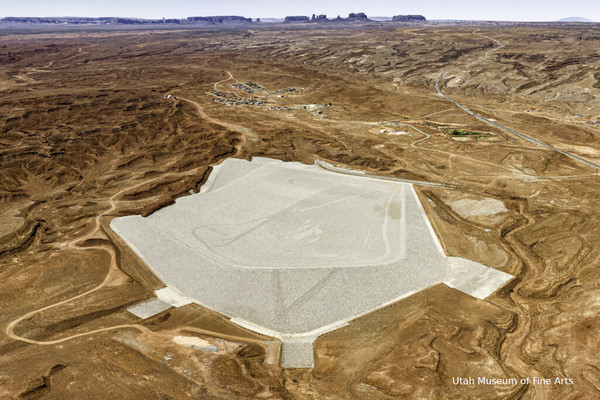Dublin Core
Title
Description
Before Moab was a world famous tourist destination, it was a mining town. In the 1950s, the federal government incentivized prospectors to find uranium in the surrounding desert. The resulting mining boom lasted only a decade, but evidence is still visible, even now that Moab has redefined itself as an outdoors playground. On the bank of the Colorado River, not far from the entrance to Arches National Park, sits radioactive waste tailings from the uranium industry that are still being mitigated.
Defining the desert as either recreation paradise or radioactive dumping ground depends on your perspective. Viewing the desert as valueless – as a wasteland – can allow for uses that destroy the land and harm those who live nearby. Characterizing the desert in this way is called "wastelanding."
Uranium mining also took place on and near the Navajo Nation, yet remediation efforts there have been slow. The area contains more than 500 abandoned mines, with fewer than half of those currently scheduled for cleanup. Miners of all backgrounds and their families have gotten sick, but the ongoing harms have fallen disproportionately on Diné people.
Like the Diné, the Skull Valley Goshute in Utah’s West Desert have experienced adverse health impacts from military wastelanding. During World War II, the federal government needed open tracts of land far removed from population centers. It looked to Utah’s West Desert, where it built the Dugway Proving Ground and the Deseret Chemical Depot on lands surrounding the Skull Valley Goshute Reservation. These facilities secretly tested the effects of hazardous materials and weapons, which contaminated the land, water, and air with chemicals, radiation, and land mines. Dugway Proving Ground, which is still in operation, has since become an Environmental Protection Agency “Superfund” site requiring environmental remediation.
Characterizing a landscape as barren and remote creates a version of land that is permissible to destroy, regardless of the lasting toxic legacies. Desert land is not inherently valuable or valueless – rather, value is something that people assign to it. How might Utah’s desert look different if there were no “wastelands?”
Creator
Source
_______________
See Traci Brynne Voyles, Wastelanding: Legacies of Uranium Mining in Navajo Country (Minneapolis: University of Minnesota, 2015); Doug Brugge, Timothy Bennally, and Esther Yazzie-Lewis, eds., Navajo People and Uranium Mining (Albuquerque: University of New Mexico, 2006); David Rich Lewis, “Skull Valley Goshutes and the Politics of Place, Identity, and Sovereignty in Rural Utah” in Bridging the Distance: Common Issues of the Rural West, ed. David B. Danbom (Salt Lake City: University of Utah, 2015).

